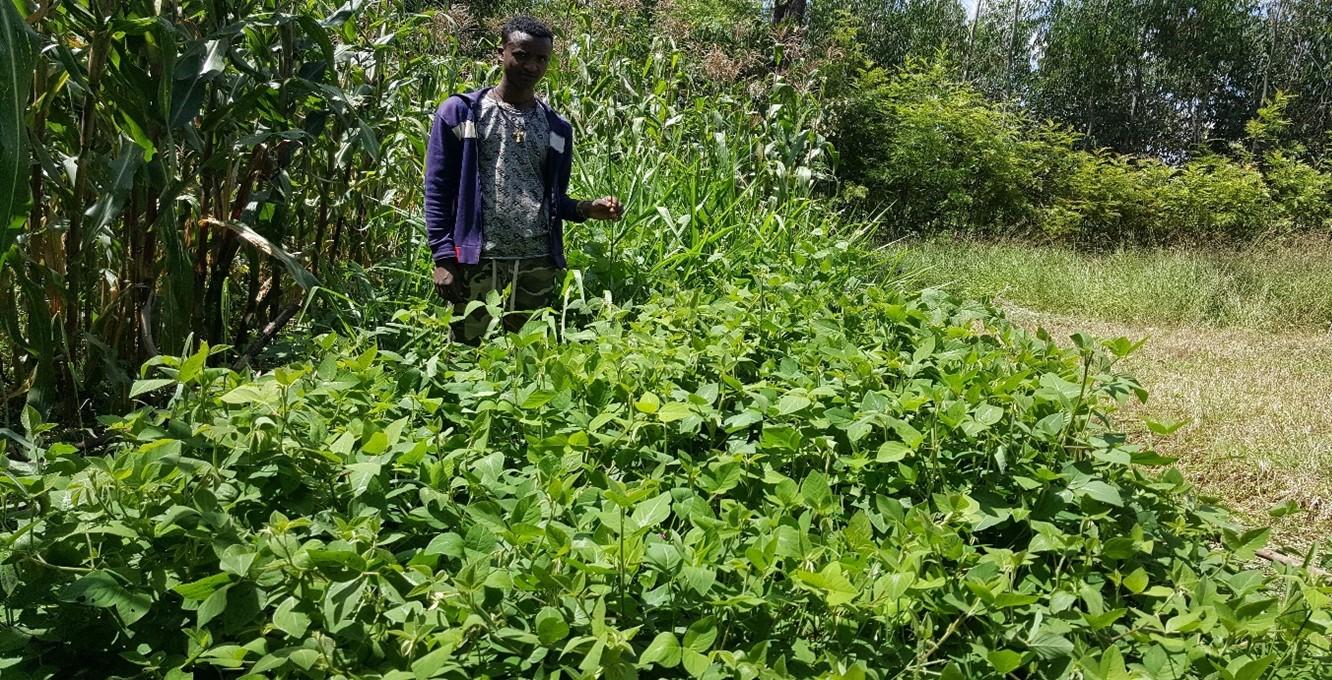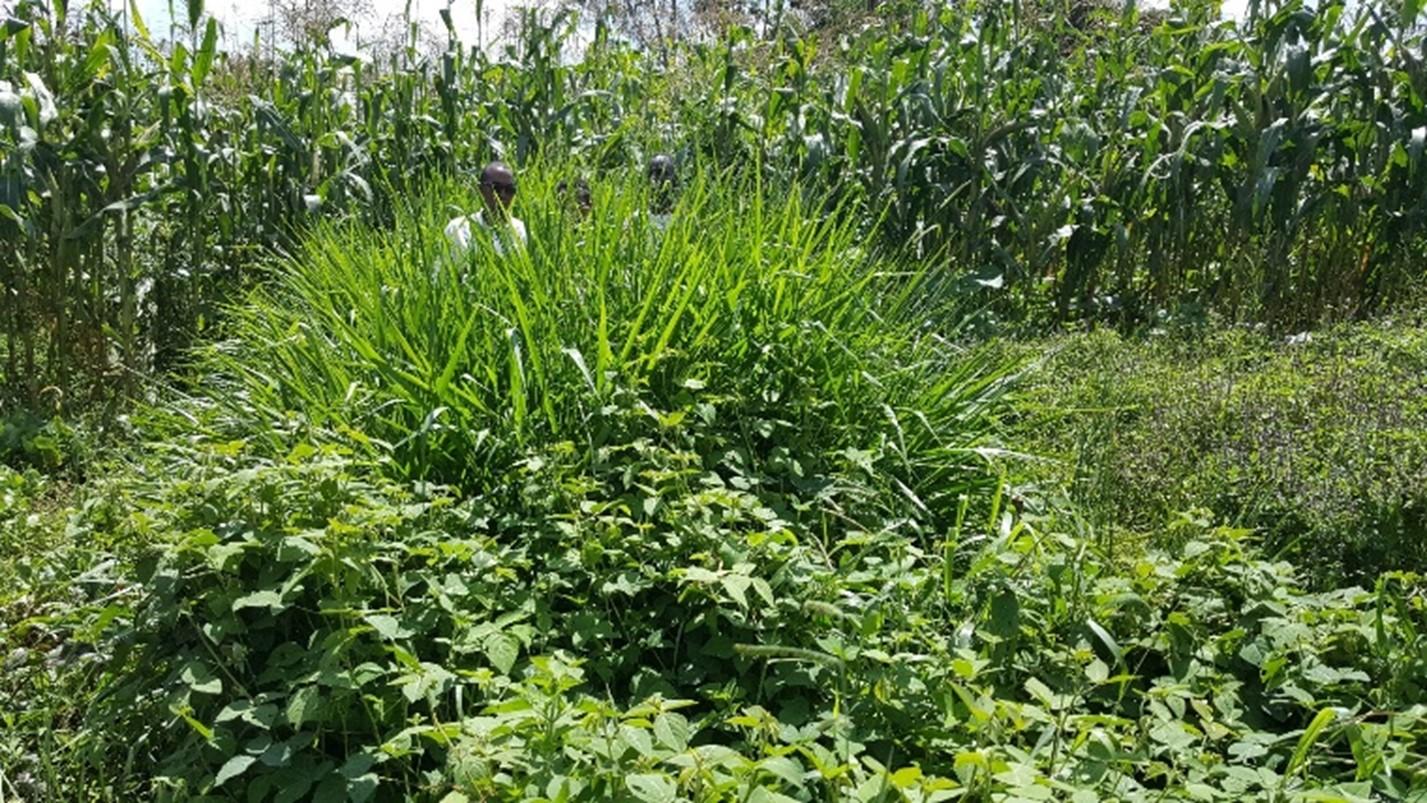From the Field A Collaboration of Identifying climate resilient forages between scientists and farmers

By Feyera Merga, Mohammed Ebrahim, Kalkidan Ayele Mulatu, Wuletawu Abera, An Notenbaert, Marit Jørgensen
On October 23, 2022, we visited Yismahu Jemere’s field in the Dangila area of Amhara region, northern western Ethiopia. Yismahu is a participant of an on-farm exploratory testing of climate resilient mixed grass-forage systems, as part of the Ethiopia Grass project, implemented by Alliance of Bioversity & CIAT (the Alliance), in collaboration with project owner Norwegian Institute of Bioeconomy Research (NIBIO), Norwegian University of Life Sciences (NMBU), Trinity College Dublin, Hawassa University and Bahir Dar university. Mr. Jemere is a young farmer who has hope on the Mombasa (grass) and Desmodium (legume) mixtures, which are one of the three experimental forages he is growing on his designated field for the research. He said, “this grass and legume mixture grows very fast with high biomass, covers bare soil quickly and will replace my local forage grass.” His testimonial was not only about the high biomass he hoped for, but also the hope he has on Mombasa grass for protecting soils from erosion. This is especially important as soil in the study areas: northern and southern highlands of Ethiopia, are highly exposed to erosion due to lack of vegetation cover. In addition, mr. Jemere mentioned that fast growing grasses like Mombasa can be fed to oxen early in the season when there is feed shortage during land preparation for crop sowing.
Maru Getahun and Meshesha Aschenk are practitioner farmers, from Dera district of Amhara region, who also planted Mombasa with the grass Brachiaria cv Cayman and legume Lablab. The two farmers note that Mombasa mixtures with Desmodium, Lablab, and Cayman show the best combination in terms of ground cover and biomass yield. The reason being that Mombasa grows fast and straight, as well as easily supporting fast growing legume forages.

Photo 1. Mr. Yismahu Jemere, a young smallholder farmer standing next to his field and discussing about the performance of the mixed forage trial with the Alliance of Bioversity and CIAT (ABC) researcher in Dangila, Amhara region in Ethiopia. (Photo credit: Alliance/ Feyera Merga)
Livestock are vital for the food security of millions of people in Ethiopia and will remain important in the coming decades. Ethiopia’s animal feed demand for its large livestock population is still not met, and the associated overgrazing has become a major source of environmental degradation. The lack of high yielding forage varieties and optimum cropping system, as well as inefficient forage management practices in the sector are among the major hurdles for effective land restoration. Competing land use practices, changing demographics and dynamics in the country further aggravate feed shortages. Yismahu’s family is an example of one of the millions affected by shortage of livestock feed.
The Ethiopia Grass project aims to identify an integrated grassland/crop systems to improve feed provision for livestock and production of food crops, while improving soil quality. One of the approaches taken in this exercise is to identify grassland mixtures that are climate resilient through the active participation of smallholder farmers under heterogeneous production environments. Here, the ‘triadic comparisons of technology options’ (TriCot) approach is applied, relying on on-farm, blind, triadic comparisons of technologies, where farmers receive different combinations of three randomly assigned technologies from a set of ten grassland species or species mixtures, and test and observe their performance under farm conditions.

Photo 2. The performance of forage TriCot trials with grass-legume mixtures and sole forage cropping systems in Blate Woreda, SNNP region (left) and Dangla Woreda, Amhara region (right), Ethiopia. (Photo credit: Alliance/ Mohammed Ebrahim & Hawasa University/ Beshir Mohammed)
As part of this on-farm participatory trial, The Alliance in collaboration with the district agricultural offices of Amhara, Sidama, and Southern nations, nationalities, and peoples (SNNP) regions have established three hundred forage plots. The trials are implemented on farmers’ fields to demonstrate forage management practices, grass with legumes mixtures or intercropping systems. This allows farmers to evaluate and choose from different forage species and mixtures for their livestock feed and restoration of degraded lands.
Acknowledgements
This work was funded by the Research Council of Norway, grant number 314916, and in kind from the Norwegian University of Life Sciences (NMBU).

